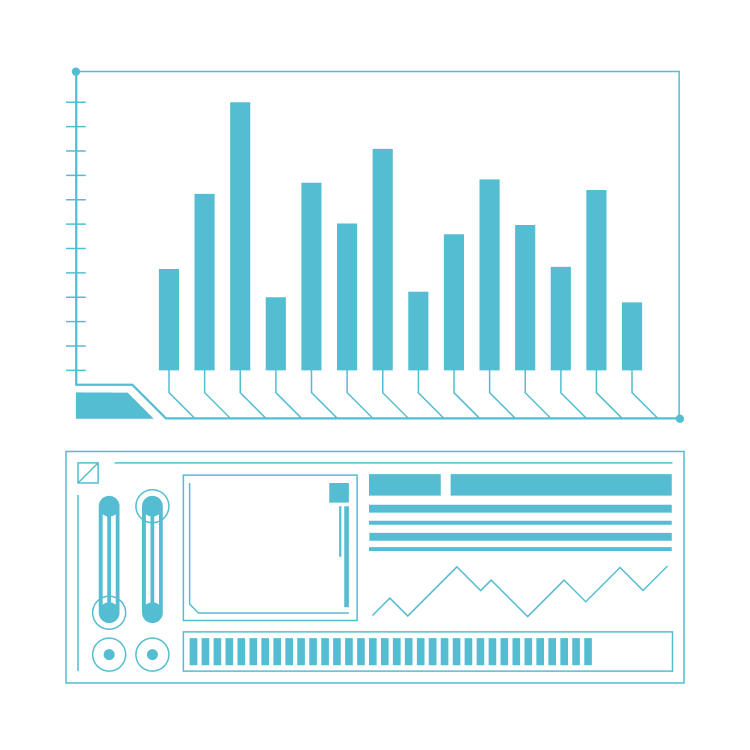


At m19, we like to deep dive on fundamental advertising and analytical instruments of Amazon. Today, we want to shed light on: Amazon sales attribution.
Often overlooked, Amazon sales attribution is a powerful tracking solution that determines sellers’ advertising cost of sales or ACOS. Keep on reading to discover how to read sponsored sales attribution and Amazon Attribution Beta to derive insights from your ads’ performance and find the extent to which it impacts your ACOS.

The key idea behind sales attribution is identifying which of your online ads are driving the most sales. More specifically, Amazon sales attribution highlights ads from specific campaigns that a shopper was exposed to before purchasing a product. Therefore, understanding sales attribution is super valuable to identify if an ad increases visibility for one particular product as well as for your overall brand.
Furthermore, several metrics are available in Seller Central to help you quantify this impact and comprehend how ACOS is computed. Thus Amazon sales attribution highlights ads that are outperforming not only at a product level but at a brand level.
The easiest way to understand sponsor sales attribution is with a simple example. Let’s consider a shopper timeline (figure 1) looking to purchase earbuds. The shopper accesses amazon.com, searches for earbuds, lands on a search result page where numerous earbuds are displayed, and clicks on one of the sponsor slots (i.e. the earbuds from the Aukey brand in figure 1). Then imagine that the user does not buy the Aukey earbuds but comes back a couple of days later to Amazon and now visits the storefront of the same brand Aukey. They now click on another product, such as the Aukey Webcam. This second click is an organic click because they are in the brand storefront. After the organic click, they decide to purchase the webcam.

Following our shopper example, we represented, in figure 2, how amazon would attribute advertising and sales in the advertising report. On the one hand, we have the Aukey earbud priced at 30$. The report will show how much Aukey pays in advertising cost for the sponsored click, here 1$ in our example. Next, a sponsored sale of 50$ would appear in the report, representing the webcam’s price. Finally, a total sale of 0$ will be displayed since the shopper does not purchase the earbuds but the webcam.
On the other hand, the 50$ Aukey webcam has no advertising cost since the sale came from an organic click. As the sponsored sale was attributed to the earbuds, Amazon attributes the total sale or the revenue to the webcam’s ASIN. To sum up, a click happens on a product - the earbuds - but the buyer buys another product - the webcam - so Amazon attributes the sponsored sale to the clicked product, which led to the purchase.

Such a timeline takes place during a specific matching window. Matching windows are the moments between the sponsored click, clicking on the earbuds, and the sell, buying the webcam. Depending on the specified metric, those windows can last anywhere between one to thirty days. It is essential to keep in mind that sponsored sales attribution can come from different ASINs. Amazon is reporting all sales happening on a user session independently from the product that has been clicked or not.
When we introduced the concept of sponsored sales attribution, we mentioned that it affects the ACOS (figure 3). So, let’s further develop our Aukey example to understand precisely how the earbuds’ and the webcam’s respective ACOS are affected.

Let’s start with the earbuds. The ACOS will be lower than it should be for two reasons. First, we report a sponsored sale of 50$ where our product only costs 30$ and second, the earbuds will not be the purchased product. So the sales are much higher than expected (20$ higher), resulting in a lower ACOS. On the flip side, total ACOS (TACOS) is higher than it should be. TACOS is almost similar to ACOS.
ACOS = costs / sponsored sales
TCOS = costs / total organic and sponsored sales
Therefore, when we look at TACOS at ASINs level, it will be higher than expected as the costs are linked to the earbuds where the total sales are not.
The webcam is the opposite. ACOS would be pretty high because no sponsored sales are attributed to the webcam, and the TACOS is lower than it should be because the cost is attributed to the earbuds. Overall, when sales are not happening on the identical clicked product for which sellers spent PPC, ACOS can be misleading. We urge sellers to pay attention to TACOS at the ASIN level as it does not consider cross-selling between products when a product is clicked and another bought.
So let’s now look at potential solutions that would encompass cross-selling between products.
Some sellers might think about building an ACOS metric based on sponsored sales with the same stock-keeping unit (SKU). So we would consider sales that happened on the product that has been clicked. However, the metric would ignore the effect of sponsored products driving sales for other products. Hence, we cannot solve our ACOS bias by only considering SKU-sponsored sales.
One solution could be to avoid analysing ACOS at the product level but rather at the group level. The idea is that when products are cross-selling, ACOS at the group level will catch everything without considering some ASINs that have been clicked and the others that have been sold. Therefore, in order to mitigate the effect, we would recommend sticking with ACOS at groups of products or at accounts levels.
The metrics in the advertising console do not have the same SKU. Still, if you want to push your analysis further and know exactly what is happening with your PPC, data is available and public in the advertising report. Sellers simply need to fetch search term reports and download the spreadsheet. We have identified four interesting columns to study.
A straightforward way to analyse those columns is to compute the share of sponsored sales same SKU using the formula below:
Share of sponsored sales same SKU = 7 days Advertised SKU sales / 7 days total sales.
Employing this formula for every ASIN, sellers will know the percentage of the same SKU sales on a specific ASIN. Therefore, when sellers advertise a product, the higher the percentage of sponsored sales of the same SKU is, the higher the chances of selling this same product are.
Sponsor sale attribution is not the only tool. Amazon beta attribution is another tool that deepens our understanding of customers’ journey (figure 4). Similarly to Amazon sponsored sales attribution, Amazon beta attribution is looking at a sale that happened on the Amazon platform. The goal is to attribute a sale to action on Amazon, such as a sponsored click, or an action on other channels, like Google or Facebook. Once the sales are attributed, we can trace back which channels drive the most sales for your Amazon products.

Using the same Aukey example, let’s consider that the user journey starts on Google searching for earbuds. The user clicks on the Google ad for the Aukey earbuds and lands on Amazon. They browse Amazon for other products such as a webcam and then leave. Later the user accesses their social feed on Facebook and clicks on the display ad for the Aukey webcam; they land on Amazon, and this time they purchase the webcam. Therefore, the sale will be attributed to Facebook so that sellers can track how much they are spending on advertising on Facebook and how much sales it generates. Overall, Amazon attribution beta points out which advertising channel helped or at least led to a conversion on Amazon.
The key point we takeaway at m19 is that sellers can optimise their sales funnel by tracking customers through the entire buying process. Remember that the reported ACOS on Amazon that everybody is trying to optimise is not an ACOS same SKU sponsored sales. Sellers invest in a product’s advertising which might lead to selling another product (not the product that has been sponsored). It will come up in your ACOS competition, and you will see it has sponsored sales on the advertising console. Amazon sponsor sales attribution offers the opportunity to look and analyse numbers differently so as to sharpen your advertising decisions.
Discover opportunities. Maximize your sales. Grow your Amazon business!
Get started with ZonGuru, access all the tools with a FREE trial.
.webp) Start FREE Trial
Start FREE TrialAmazon’s Algo Has Changed. Get Your Listings AI-Mapped.
 Claim Limited Offer
Claim Limited OfferDiscover your TRUE sales potential with a Free Growth Report.
 Get Free Growth Report
Get Free Growth Report